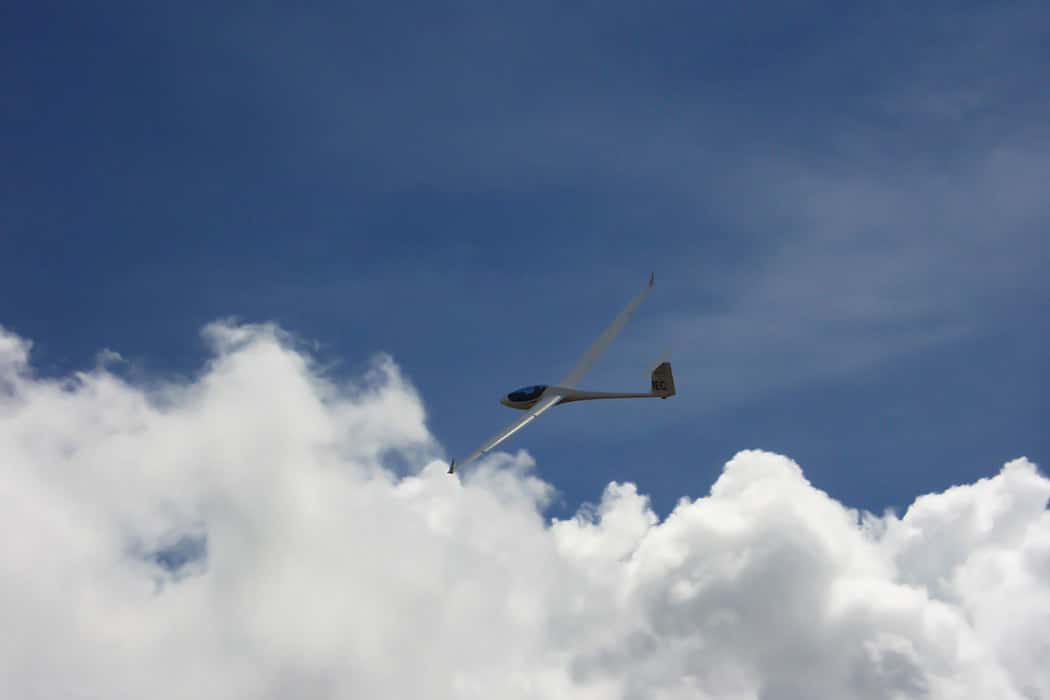The FAA says that the safety risk data does not support removal of the current exception in the glider transponder requirements.
In a document published to the Federal Register on December 23, 2016, the FAA has withdrawn proposed changes to glider transponder requirements. Previously, on June 16, 2015, they had posted an Advanced Notice of Proposed Rulemaking (ANPRM) that sought public comments and feedback for rulemaking that would “require gliders operating in the National Airspace System (NAS) to be equipped with transponders.”
This resulted in 231 comments from both aviation related groups and individuals, and after reviewing the comments, “The FAA is withdrawing that action because the limited safety benefit gained does not justify the high cost of equipage.”
Reasons Behind the ANPRM on Glider Transponder Requirements
According to the FAA, the ANPRM came about after an August 28, 2006, non-fatal midair collision between a Hawker 800XP aircraft and a Schleicher ASW27-18 glider. The collision happened roughly 42 nautical miles south-southeast of Reno-Tahoe International Airport (RNO) at an altitude of about 16,000 feet. According to the FAA, the collision was also in an area “where gliders are excepted from the transponder equipment requirements in Title 14, section 91.215(b), of the Code of Federal Regulations (14 CFR).” Interestingly, though the glider was equipped with a transponder, the glider pilot had turned it off to conserve power.
On March 31, 2008, after conducting their investigation of the accident, the NTSB provided safety recommendations to the FAA, including removing the glider exceptions that related to transponder equipment and use requirements, stating that “transponders are critical to alerting pilots and controllers to the presence of nearby traffic so that collisions can be avoided.“
On March 13, 2012, Nevada Senator Harry Reid wrote to the FAA expressing concerns about the safety of gliders and other aircraft using the same airspace around RNO. On April 27, 2012, Nevada Congressman Mark Amodei also wrote them with similar concerns. Both politicians requested that the FAA remove the glider exemptions regarding the use of transponders, with Reid requesting that they use their emergency rulemaking procedure to do so.
In response, on May 18, 2012, the FAA Administrator said that while the agency had considered emergency rulemaking, they had decided that an ANPRM would be the right move, allowing them to gather input and commentary from the glider community before making a change. And, after gathering data and analyzing reports, the FAA published the ANPRM on June 16, 2015.
More Details on the Comments Received on the ANPRM
According to the FAA, “approximately 18 organizations and 213 individual or anonymous commenters responded” to the ANPRM. Breaking down the comments further, they say that 161 were unfavorable or adverse to the proposed change, 52 comments were favorable, and 18 were neutral. Of the 18 organizations that commented, they said that 14 responded unfavorably, 2 responded favorably, and 2 were neutral.
Among the organizations commenting were the Soaring Society of America (SSA), Aircraft Owners and Pilots Association (AOPA), Vintage Sailplane Association (VSA), Experimental Aircraft Association (EAA), Civil Air Patrol (CAP), National Transportation Safety Board (NTSB), American Association for Justice (AAJ), and 11 local groups. Among the individuals commenting, the FAA noted that while glider and general aviation pilots were the majority, there were comments from pilots of all types, including airline and military pilots, with many pilots holding multiple ratings.
In AOPA’s 2015 comments to the ANPRM, they said that they saw no benefit to the removal of the current glider transponder exception, saying that “History has shown that gliders are safe and that this exemption works in the favor of aviation being accessible. There would likely be a high financial cost to these aircraft owners should the exemption be discontinued, with little return in benefits as they operate in the national airspace system.” AOPA added that they believed that the removal of this exception would not substantially increase safety.
In the withdrawal notice, the FAA agreed with AOPA’s assessment, saying that after analyzing the near mid-air collision (NMAC) reports over a 10 year period, removing the glider exception “has the potential to reduce the NMAC occurrences by about 0.70 occurrences per year, or about 2 NMACs every 3 years (0.38% of all reported NMACs per year over that period).” They added that based on the nationwide rate of occurrence, “safety risk data does not support a rule requiring glider operators to install a transponder device at this time.” The agency also noted that the number of gliders that were voluntarily being equipped with collision avoidance systems was steadily increasing, from 14% in 2006 to 24.3% in 2014.
A Glider Rating was Supposed to Turn me into a Super Pilot

I began glider school based on the belief that learning to fly without power would make me a better powered-pilot. I base out of Truckee, California, and there happens to be a rather renowned glider school at the airport. They operate from May to October and are a premier location in the world to fly gliders or “Soar” largely due to the incredible winds created by the mountains. [Click here to read more…]
The cost of equipping gliders with the necessary equipment was also on the commenter’s minds, with 138 of the comments discussing this topic. Of those comments discussing cost, the FAA said that “there were just 20 comments that could be characterized as in favor of requiring gliders to equip with transponders to some degree.”
In discussing the cost, the agency estimated that the cost of requiring gliders to be equipped with transponders would be “about $5,000 per glider and more than $7 million for the glider fleet.” They further break down the costs in the withdrawal notice, saying that about $3,979 would be in non-recurring hardware and installation costs, with an additional $1,009 in recurring inspection and battery replacement costs over a 10-year period.
In the notice, the FAA also addresses the use of other options, such as ADS-B, TABS, and FLARM equipment. And while the agency says that they don’t view FLARM “as the most effective system to support collision avoidance with powered aircraft,” they do say in the conclusion that they “recommend that all glider aircraft owners equip their gliders with a transponder meeting the requirements of § 91.215(a), a rule-compliant ADS-B Out system, or a TABS device.”
The FAA also says that though they won’t be taking a regulatory course of action regarding the glider transponder requirements at this time, this doesn’t “preclude the FAA from issuing another notice on the subject matter in the future or committing the agency to any future course of action.”
For those interested, you can read the full text of the withdrawal notice here.















Leave a Reply